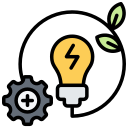
Innovative Wind Turbine Solutions
Innovative wind turbine solutions are at the forefront of transforming the global energy landscape. By integrating cutting-edge technology with sustainable practices, these advancements are redefining what’s possible in renewable energy generation. Companies and researchers are continuously pushing boundaries to create turbines that are more efficient, reliable, and suitable for various environments. As demand for clean energy grows worldwide, the development and implementation of innovative wind turbines are helping to reduce dependence on fossil fuels, decrease carbon emissions, and pave the way toward a greener future. Understanding these innovations is essential for stakeholders ranging from policy makers and utility providers to environmentally conscious consumers.
Advanced Turbine Blade Design
Aerodynamic Shaping
Advanced Lightweight Materials
Adaptive Blade Control Systems
Offshore Wind Power Innovations
Floating Wind Turbine Technology
Corrosion-Resistant Coatings
Remote Monitoring and Robotics

